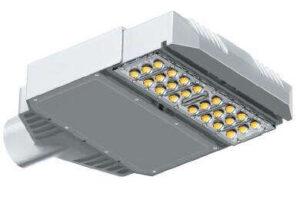Illuminating Excellence: Exploring the Benefits of Die Casting in Lighting Manufacturing

It is a widely used manufacturing process that offers numerous advantages in various industries, including lighting. Lighting die casting involves the production of high-quality lighting components using molten metal injected into precision molds. In this article, we will delve into the benefits and applications of die casting in the lighting industry.
1. What is Lighting Die Casting?
It is a manufacturing process that uses high pressure to inject molten metal, such as aluminum or zinc, into intricate molds designed for lighting components. The molten metal rapidly solidifies, resulting in precise and detailed reproduction of the mold’s shape. This process allows for the efficient mass production of lighting parts with exceptional quality and consistency.
2. Benefits of Die Casting in Lighting Manufacturing:
2.1 Design Freedom:
It offers lighting designers great freedom in creating complex and aesthetically pleasing designs. The process allows for the production of intricate shapes, textures, and patterns that enhance the visual appeal of lighting fixtures.
2.2 Excellent Precision and Dimensional Accuracy:
Lighting components must meet strict dimensional requirements to ensure proper fit and functionality. Die casting enables precise reproduction of intricate details, ensuring consistent dimensions across large production runs. This level of precision contributes to the seamless integration of lighting fixtures in various environments.
2.3 Superior Surface Finish:
It produces lighting components with excellent surface finishes, requiring minimal post-processing. This advantage eliminates the need for time-consuming polishing or finishing operations, reducing manufacturing time and costs.
2.4 Lightweight and Durable:
They are lightweight, yet highly durable. The inherent strength-to-weight ratio of die-cast materials, such as aluminum, makes them ideal for lighting fixtures that require both structural integrity and ease of installation.
2.5 Thermal Management:
Effective thermal management is crucial in lighting applications to ensure optimal performance and longevity. Die-cast lighting components provide excellent heat dissipation properties, increasing the overall efficiency and lifespan of the lighting system.
3. Applications of Die Casting in Lighting:
3.1 LED Lighting Housing:
It is widely used to manufacture housings for LED lighting fixtures. The complex shapes and precise dimensions required for LED modules are easily achieved through die casting, ensuring proper heat management and optimal light distribution.
3.2 Lamp Holders and Bases:
Die casting allows for the production of lamp holders and bases with intricate designs and precise threading. These components play a vital role in securely holding bulbs or lamps in place, ensuring safe and reliable illumination.
3.3 Reflector Cups:
Reflector cups used in various lighting applications, such as spotlights and downlights, can be efficiently manufactured through die casting. The reflective properties of these cups enhance light direction and distribution, resulting in more efficient lighting systems.
3.4 Decorative Components:
It enables the production of decorative components, such as ornate trims and embellishments, that enhance the visual appeal of lighting fixtures. These components can be manufactured with high accuracy and intricate details, adding artistic flair to lighting designs.
Lighting die casting Conclusion:
It provides significant advantages for the lighting industry, including design freedom, precision, excellent surface finish, lightweight durability, and effective thermal management. Its applications range from LED housing and lamp holders to reflector cups and decorative components. By incorporating die casting into their manufacturing processes, lighting manufacturers can achieve superior quality, functional performance, and aesthetically pleasing lighting fixtures that illuminate our lives.






